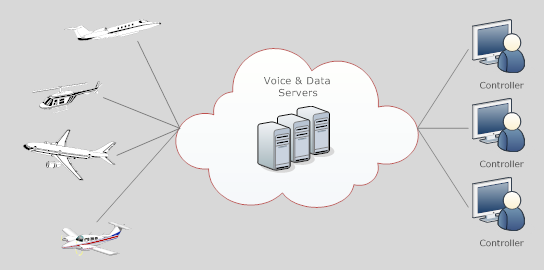How does it work?
 PilotEdge
provides software to connect your flight simulator to our voice and
data network.
PilotEdge
provides software to connect your flight simulator to our voice and
data network.Information about your aircraft, such as your location, altitude and heading, is sent to our servers, and then relayed to nearby pilots. Similarly, you receive the same information about aircraft that are relatively close to you. The software draws and animates these aircraft within the simulator, all the way down to details such as whether the landing or strobe lights are on.
The Air Traffic Controllers connect to the voice and data network using specialized software, providing a display that is virtually identical to that which is used in real world facilities.
We have a developed a sophisticated voice system that closely mirrors the real world operations of VHF radio. You’ll only hear the pilots that are on your frequency, and only if they’re relatively nearby. As you gain altitude quickly after departure, you’re able to hear other aircraft from increasingly longer distances. We also support operations on the CTAF at non-towered airports, so be ready to make those position reports as you enter or leave the pattern.
How do I use it?
The service is certainly very powerful, but is actually very simple to use. All you need is a headset, a compatible flight simulator, and an Internet connection.Once you’ve activated your PilotEdge service, and downloaded the software, you start the flight simulator, position your aircraft on the ramp, and connect to the network. If you’re connecting during the network’s published operating hours, and are flying in an area where PilotEdge service is available, then you are guaranteed to have ATC coverage.
Master on, avionics on, set the comm radio to the appropriate frequency (delivery, ground, tower, etc), press and hold the PTT button, and make the call, “Long Beach delivery, Piper 123AB, request IFR to Santa Barbara.”
You’re "in the system", and will never look at the simulator the same way again. Copy the clearance, set your transponder (ATC sees the code and the mode), call ground for taxi, and you’re on your way. If the airport layout is unfamiliar, or confusing, call for a progressive taxi. It’s just like the real thing.
